Introduction to the treatment methods of the three best coffee farms in Colombia
For professional baristas, please follow the coffee workshop (Wechat official account cafe_style)
This time it is about three Colombian coffee plantations. The first La Palma y El T ú can is attracted by their fermentation methods, and the other Finca Santuario is because the author recently bought their family's love elixir, so I want to know more. The third is Finca Santuario's sister estate Immaculate Coffee Farm.
1. La Palma y El T ú can
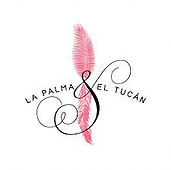
Just their LOGO pink matching and fermentation methods are very different from the traditional methods, so I was curious to find some information.
La Palma y El T ú can (LPET, Chinese name "Palm and Big Bird") is a coffee shop and coffee processing plant founded in 2011 by three Colombian youth Elisa Madrinan, Felipe Sardi and Carlos Arevalo.
The estate is located in the central capital of Colombia, Bogot á, in the province of Cundinamaca (Cundinamarca). Cundinamarca, which belongs to the eastern part of the Colombian Andes, has a number of microclimatic zones, with an average temperature of 21 degrees, an average humidity of about 75 per cent and 1600 hours of sunshine per year, which is a volcanic soil, so it is very suitable for planting and animal habitat.
In Colombia, due to economic considerations, many small farmers do not have good technology, equipment and talents, so the quality of production is not guaranteed, and they cannot find good buyers, so they give up growing coffee one after another, and young people would rather leave the countryside. look for a job with a higher income in the city. Therefore, LPET was established in 2003 to work with about 200 small farmers within a 10-kilometer radius, so that their coffee beans can be fermented in more controlled and innovative ways, showing the high quality and unique potential of Colombian beans, and helping small farmers in their hometown to have more awareness and better income.
LPET's own farmland, which was purchased in 2011, was abandoned for 15 years, about 18 hectares at a high altitude of 1600-1800 meters, and the nearest city is Zipacon, about 50 kilometers from the capital Bogot á, near the R í o Apulo, where they have divided 14 producing areas with special local conditions. In their own laboratory, they study different fermentation methods to bring us unique coffee.
Another project of LPET-Estate&Varietal
Is to grow some rare varieties on the manor, such as Geisha, SL-28, Sidra and Typica.
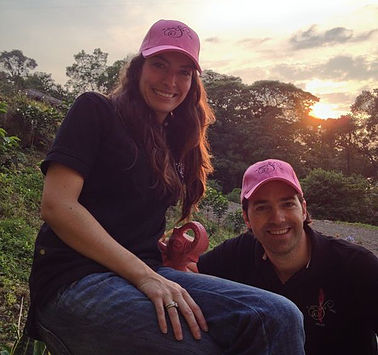
Elisa Madrinan and Felipe Sardi of La Palma y El T ú can
LPET has experienced staff to pick zero-defect and ripe coffee fruits by hand. Their processing method is Wet mill, and the equipment in the fermentation tank is specially designed for small farms and is suitable for processing small amounts of coffee.
Since they can handle coffee beans with different microlot, they should look at the name of the farmer on the package when buying, so that they can know more clearly the origin, origin and variety of coffee beans.
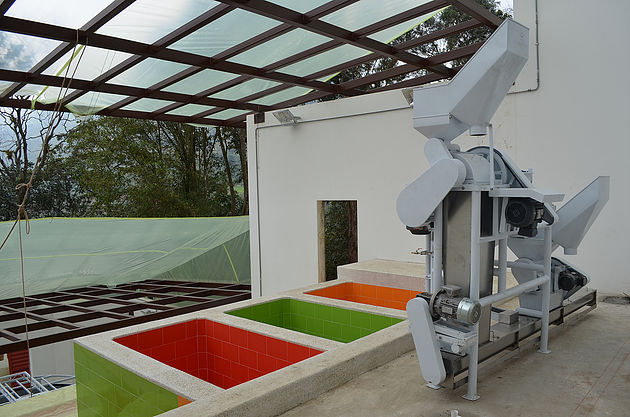
LPET fermentation tank
The fermentation methods used by LPET are the microbes found in coffee fruits, the sugars in the slime of coffee beans, or different cultured bacteria or yeasts. After adjusting different variables (such as temperature, humidity, oxygen content, pH and sugar content), each microbatch (Microlot) has a different display. Three fermentation methods temporarily used by LPET.
1) Lactic acid fermentation-anoxic fermentation LACTIC FERMENTATION (Anaerobic)
This method uses lactic acid bacteria to convert the sugar in the slime of coffee beans into lactic acid under the condition of hypoxia. However, in the case of hypoxia, lactic acid bacteria are easily affected by environmental factors such as temperature and pH, so each fermentation process should be properly controlled. This method of fermentation, lactic acid can show the sweetness of coffee, chocolate, butter, wine and other flavor, silk taste.
2) acetic acid fermentation-aerobic fermentation ACETIC FERMENTATION (Aerobic)
This method uses yeast for fermentation, and the alcohol produced will be converted into acetic acid in an oxygen environment, so coffee beans will have the flavor of wine, orange acid and yellow drupes (such as peaches and plums).
3) mixed / double fermentation
Is to mix the above two methods of fermentation, the flavor will be more complex, coffee beans will show its raspberry fruit, wine flavor, silk taste, and have a long finish.
2) Finca Santuario
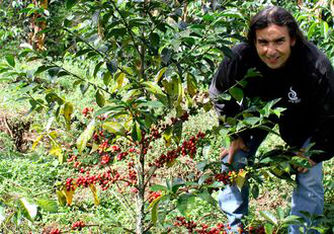
Camilo Merizalde, a landowner born in Valle de Cauca, Colombia, has watched adults deal with coffee since childhood. After graduating in the United States, he worked as the manager of a Colombian food and beverage factory, so he had the opportunity to return to Colombia to buy raw coffee beans. Although Colombia is a high-yield coffee area, it is often ignored, so it is decided to let the world know Colombia's boutique coffee.
In the beginning, Camilo grew coffee on his wife's farmland in Popay á n, and learned from botanists in Japan, the United States, Central America and Colombia, dividing the farmland into 266 plots of about 0.25ha each, most of which were named after plants (such as Heliconias: fake birds of paradise, Guayabos: pomegranate) to facilitate his observation and study of the climate and growth of each area. The manor is about 135 hectares, of which about 62 hectares are used for growing coffee.
It is located in the alpine volcanic area with a high altitude of 1890-2010 meters, with a large temperature difference between day and night, which is suitable for growing high-quality coffee and coffee trees on slopes. He named the manor Santuario.
The distance between each row of coffee trees is wide, which can prevent the spread of coffee tree diseases and increase production. In addition, Camilo also grows a large number of leguminous plants (leguminous trees) in agricultural land, which can not only convert nitrogen in the air into nutrients, but also provide shade, wind protection, tree roots protection and soil moisture retention.

Camilo initially intended to be quality-oriented, planting low-yield and fragile native lines, such as Typica and Bourbon. Even so, the coffee beans in the cup test results are very excellent. Other rare varieties planted include Eugenoides, Geisha, Mibirizi, Mocha, Purpurescens, Sudan Rume and so on.
Camilo is looking for the best planting methods, not only looking for different irrigation methods to face the problem of climate change, but even building a large greenhouse to cultivate 26 experimental varieties. In recent years, Camilo has found four natural hybrids in the manor. At the peak of the harvest season, fully ripe coffee fruits are peeled twice a day with a clean, small and simple washing machine. After that, the peeled fruit will be fermented for 35-40 hours without water.
Camilo believes that this dry fermentation is stable and improves the acidity and sweetness of coffee beans. After fermentation, it will be exposed to the sun for 14 days (raised bed dried) in a UV-resistant plastic shed (Parabolic beds).

Finca Santuario's first batch of coffee beans won praise in 2005, and since then the beans from the estate have often become competition beans (such as WBC champion Sasa Sestic and 2013 Australian barista champion Matt Perger). The batches that many people know are Finca Santuario Sofia (variety: red Bourbon), love elixir Finca Santuario Heliconias (variety: red Bourbon), Finca Santuario Guayabos (variety: yellow Typica), Finca Santuario Aquacatillo (variety: red Typica).
3) Caf é Inmaculada
When it comes to Camilo Merizalde, I think of the special boutique coffee series that Intelligentsia Coffee once focused on. The series, launched in 2011 with Caf é Inmaculada, a partnership between Camilo Merizalde and his childhood partners Julian, Andres and and Santiago Holguin, is a limited edition of rare coffee beans, including Sudan Rume, Laurina and Maragesha.
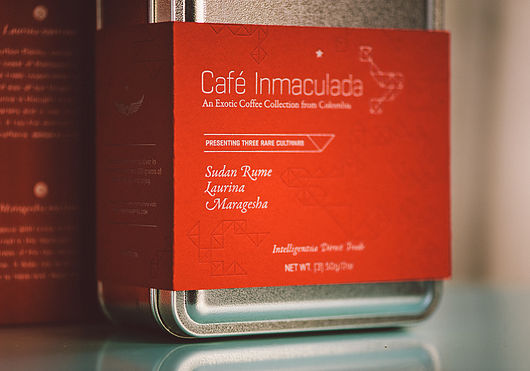
The Holguin family started the coffee business in 2010 after working in sugarcane plantations in the Valle del Cauca and palm plantations in Nari ñ o.
The farmland is located in Pichinde in the Andes. The advantage is that the soil is fertile, sufficient sunshine and Rain Water, are very suitable for growing coffee. At first, the manor was only about 5 hectares, but now it has 50 hectares, of which 30 hectares grow coffee.
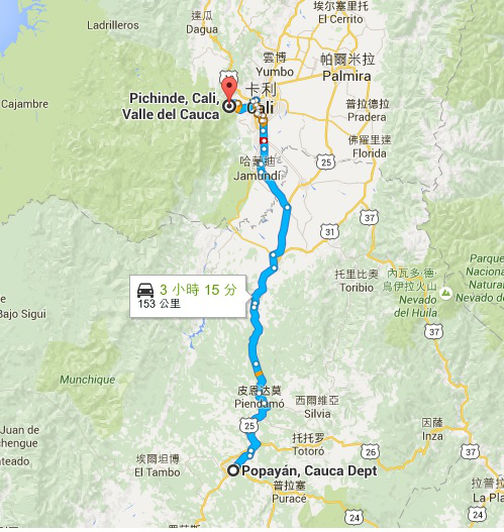
The two estates of Camilo (Finca Santuario and Immaculate Coffee Farm) are apart
The coffee house owned by the Holguin family, collectively known as Immaculate Coffee Farm, consists of three farms: Columbia Cloud Farm (Las Nubes), Holy Farm (Finca Inmaculada), and Finca Monserrat. Plant rare varieties such as Rume Sudan, Eugenoides, Laurina, Gesha, Maragesha and so on.
Jane said that rare varieties
☼ Sudan Rume (or Rume Sudan RS-510 or RS-510): from the Boma Plateau (Boma Plateau), located in southeastern Sudan, connected to the Ethiopia highlands, is a wetland in the area. It has high-quality disease resistance genes, but the yield is low, and the coffee fruit is relatively small, so it is not a widely planted variety.
☼ Laurina (or Bourbon Pointu): from R é union Island, a volcanic island in the western Indian Ocean and Madagascar in the east. In a previous article, there was also a brief introduction to Arabica coffee beans with low caffeine and high sweetness.
Bourbon Pointu (bourbon pointed body), it is clearly said that it is a Bourbon species, but the tree species are shorter, the leaves and coffee fruits are smaller, the beans are round in the middle and the ends turn back to the pointed body, and the bean body is harder.
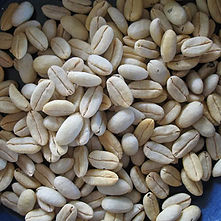
☼ Maragesha: a natural mixture of Maragogype and Geisha that can only be found in Finca Santuario.
☼ Eugenioides: this bean has only half the caffeine content of the average Arabica and is famous for its sweetness. The coffee tree is relatively short, the coffee fruit is small, and the yield is low. After three years of greenhouse planting in Finca Inmaculada, each tree produces only about 320g of raw coffee beans per year.
Take a look at the three farms
☁ Finca Inmaculada
5.12ha, high altitude 1670-1700 m, cultivated varieties Geisha, Sudan Rume, Laurina and Eugenoides.
Shade trees:
Tephrosia (shade trees with gray leaves (nitrogen that converts air as nutrients), Guamos (Inga edulis, a common shade tree in coffee fields, there are more than 300 species, they grow fast and can convert nitrogen from the air as nutrients), guava (Guavas), Carboneros (Calliandra lehmannii, the advantage is large leaves, easy to grow Birds and wild animals eat their fruits) and lemon trees (in short, they provide shade, and the fruits produced are edible. )
☁ Finca Monserrat
13.98 ha, high altitude 1700-1800 m, cultivated varieties Sudan Rume, Laurina, Geisha, Yellow and Red Borboun, Castillo and Caturro.
Shade trees:
There are Tephrosia, lemon tree, orange tree, citrus tree, banana tree, banana tree (with the same advantages as plantain: fast growth, easy to grow, edible fruit), and some resistant varieties can inhibit the growth of weeds), Chachafruto (that is, Erythrina edulis, similar to inga, pod-shaped fruit, can convert air nitrogen as nutrients).
☁ Finca Las Nubes
11.21 ha, 1750-2000 m above sea level, cultivated varieties Sudan Rume, Yellow and Red Borboun, Geisha, Laurina and Eugenoides.
Shading trees: Tephrosia, Guamos, guava and lemon trees
In addition, organic orchids and vegetables are grown.
WBC champion Sasa Sestic used the manor's Sudan Rume in the 2015 WBC competition to make more people know them. The coffee beans used at that time were 50% in the sun and 50% in carbon dioxide (Carbonic Maceration). Carbonic Maceration is a common fermentation method of red wine. Las Lubes coffee beans in sealed stainless steel containers use carbon dioxide to form an anoxic environment, which converts the sugar of coffee slime into alcohol and carbon dioxide, thus complicating the flavor of coffee.
Important Notice :
前街咖啡 FrontStreet Coffee has moved to new addredd:
FrontStreet Coffee Address: 315,Donghua East Road,GuangZhou
Tel:020 38364473
- Prev
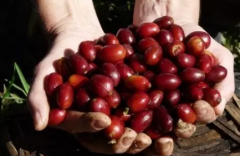
Introduction of red cherry G1 producing area, baking curve and cup test report, hand-flushing course
ETHIOPIA,YIRGACHEFFE, Cherry Red Yejasuefei Red Cherry G01 | unique geographical environment Yirga cheffe is a small town in Ethiopia with an elevation of 1700-2100 meters. It is one of the highest coffee producing areas in the world and is synonymous with Ethiopian boutique coffee. Lake Turkana, Lake Abaya, Lake Chamo to this
- Next
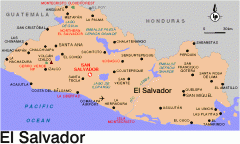
Coffee Manor introduction: what's the difference between the three Hope Manors in El Salvador and Colombia?
Professional baristas Please follow the Coffee Workshop (Wechat official account cafe_style) to introduce the Hope Estate of Guatamala, Panama and Mexico last time. There are also a lot of farmland called Hope in El Salvador. This time we will take a look at the Hope Manor of the Magaa and Pacas families. The other is the Colombian Caf Granja La Esperanza that many people know.
Related
- Does Rose Summer choose Blue, Green or Red? Detailed explanation of Rose Summer Coffee plots and Classification in Panamanian Jade Manor
- What is the difference between the origin, producing area, processing plant, cooperative and manor of coffee beans?
- How fine does the espresso powder fit? how to grind the espresso?
- Sca coffee roasting degree color card coffee roasting degree 8 roasting color values what do you mean?
- The practice of lattes: how to make lattes at home
- Introduction to Indonesian Fine Coffee beans-- Java Coffee producing area of Indonesian Arabica Coffee
- How much will the flavor of light and medium roasted rose summer be expressed? What baking level is rose summer suitable for?
- Introduction to the characteristics of washing, sun-drying or wet-planing coffee commonly used in Mantenin, Indonesia
- Price characteristics of Arabica Coffee Bean Starbucks introduction to Manning Coffee Bean Taste producing area Variety Manor
- What is the authentic Yega flavor? What are the flavor characteristics of the really excellent Yejasuffi coffee beans?

